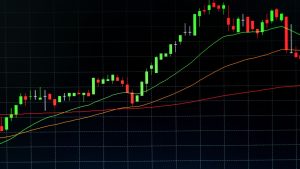Crypto pullbacks feel violent — especially when they wipe out weeks of gains in a matter of days.
Right now, Bitcoin has retraced over 30% from the all-time high, falling back to $84,900, and naturally traders everywhere are asking the same questions:
“Is the bull market over?”
“Should I sell now?”
“Is this the dip to buy?”
“Is this the beginning of a bigger correction?”
But here’s the truth most traders overlook:
Pullbacks are not only normal — they’re healthy, predictable, and necessary for the next leg up.
The real problem isn’t the pullback.
The real problem is the way traders react to them.
Today, we’re going to break down exactly how to handle market pullbacks, how to stay calm, and how to position yourself like a pro instead of panicking like the crowd.
Why Pullbacks Happen (And Why They’re Not the End of the Bull Market)
Every strong uptrend — in every market — needs to breathe.
Bitcoin doesn’t go straight up forever, and the bigger the rally, the more aggressive the correction tends to be.
Here’s why:
1. Profit-taking from early buyers
Traders who bought at $50k, $60k, and $70k eventually take profits, creating sell pressure.
2. Leverage resets
When the market overheats, funding spikes and the market becomes crowded with leveraged longs. A pullback flushes the leverage.
3. Liquidity grabs
Market makers need liquidity to push price higher. Pullbacks force traders to panic sell into demand.
4. Cooling phase in macro cycles
Every bull market follows the same rhythm: expansion → correction → continuation.
So when Bitcoin pulls back 20%, 30%, even 35% in a bull market, it isn’t a crash — it’s a reset.
This is what most inexperienced traders miss:
Pullbacks don’t end bull markets. Panic ends traders.
How to Emotionally Handle a Market Pullback (Without Panic Selling)
Emotions drive most liquidation events.
When Bitcoin falls 30%+ from the highs, most traders hit the breakdown point where fear takes over logic.
Here’s how professional traders manage their mindset:
1. Zoom out your timeframe
One red week doesn’t erase a multi-month uptrend.
2. Separate your long-term bags from your active trading bag
Long-term portfolios shouldn’t even react to normal cycle pullbacks.
3. Stop checking your portfolio every 10 minutes
Red candles feel worse when you stare at them.
4. Remind yourself: this is not new
Bitcoin has had dozens of 20–40% drops during bull runs.
Not one of them invalidated the macro trend.
5. Understand the psychology
Pullbacks exist to shake out weak hands so institutions and strong buyers can accumulate cheaper positions.
You can’t control the pullback — but you can control your behavior during it.
What Market Pullbacks Actually Mean (The Data Behind the Dip)
Here’s what most traders don’t realize:
Bitcoin has had at least one major 30–40% pullback in every single bull market in history.
- 2013 bull run → pullbacks of 35%+, multiple times
- 2017 bull run → several 30–40% retracements
- 2020–2021 bull run → multiple 25–35% pullbacks before new ATHs
These aren’t signs of weakness.
They’re signs of a stabilizing market structure resetting funding, cooling off leverage, and giving buyers another opportunity.
And even now — at $84,900 — Bitcoin remains in a macro uptrend with:
📌 Higher highs
📌 Higher lows
📌 Healthy weekly structure
📌 Macro demand still strong
📌 Dominance still holding trend
📌 On-chain accumulation increasing
Pullbacks feel harsh short-term but signal long-term strength.
How to Trade During a Pullback (Without Getting Chopped Up)
This is where most traders either make their best moves or their biggest mistakes.
During pullbacks, the market becomes:
- More volatile
- More emotional
- More unpredictable
- Less forgiving
Here’s how to survive it:
1. Don’t trade the middle
Only trade:
✔️ Key support
✔️ Major resistance
✔️ Clear structure
✔️ Volume pivots
✔️ Dominance rotation levels
The middle of the move is where traders get chopped.
2. Stop catching falling knives
Wait for confirmations such as:
- Bullish divergence
- Volume resurgence
- Market structure shift
- Break and retest on lower timeframes
Blind dip-buying is not the same thing as strategic accumulation.
3. Use lower leverage or no leverage
Volatility increases drastically during pullbacks, so even small wicks can liquidate over-leveraged positions.
4. Take trades with defined invalidation
“No plan” trading is the fastest route to liquidation during corrections.
5. Watch dominance and TOTAL3 carefully
If BTC.D is rising during a pullback → alts will bleed harder.
If BTC.D is falling during a pullback → smart money is quietly accumulating alts.
Understanding rotation helps you avoid unnecessary losses.
How to Position Yourself for the Next Leg Up
Pullbacks offer opportunities — but only if you handle them correctly.
Here’s how to position like a pro:
1. Identify high-timeframe demand zones
This is where institutions accumulate.
2. Build staggered entries instead of going all-in
Dollar-cost averaging into extreme fear creates strong long-term positions.
3. Track funding resets
When funding resets or goes negative, it’s often the signal for continuation.
4. Watch for reclaim of key levels
Reclaiming major horizontal levels signals strength returning.
5. Rotate into strong assets first
Leaders recover faster than laggers.
Look for:
- High-volume coins
- Assets with strong narratives
- Top performers from previous legs
- Coins that held strong relative to BTC
Leaders lead again.
Why Most Traders Lose During Pullbacks — And Why You Won’t
Most traders panic sell bottoms and buy tops because they trade emotionally instead of structurally.
They forget that pullbacks create the best opportunities of the entire cycle.
But with the right understanding of:
- Macro trend
- Market psychology
- Dominance rotation
- Funding resets
- Volume behavior
- High-timeframe structure
…you stop reacting to pullbacks and start capitalizing on them.
Pullbacks don’t destroy bull markets.
They build the foundation for the next phase.
Trade Smarter With EPIQ
If you want to navigate pullbacks with confidence and structure — instead of panic and emotion — the EPIQ Trading Floor gives you everything you need:
🔥 Daily market analysis on Bitcoin, ETH, and altcoins
🔥 Pullback zone alerts & macro demand breakdowns
🔥 Volume, dominance & sentiment dashboards
🔥 Tools to help time rotations and funding resets
🔥 Real-time community commentary
🔥 A 3-day free trial — so you can test everything first
👉 Start your free trial today at the EPIQ Trading Floor
Learn how to handle pullbacks like a professional — not a panicked trader.
Not Financial Advice (NFA):
This content is for educational purposes only. Always manage risk responsibly and do your own research.










Responses